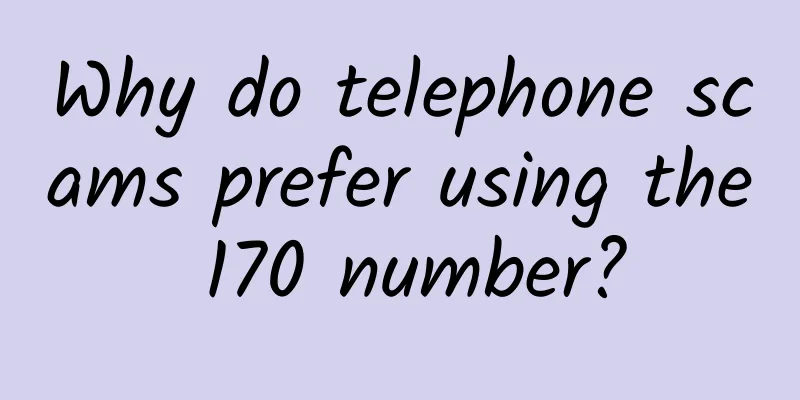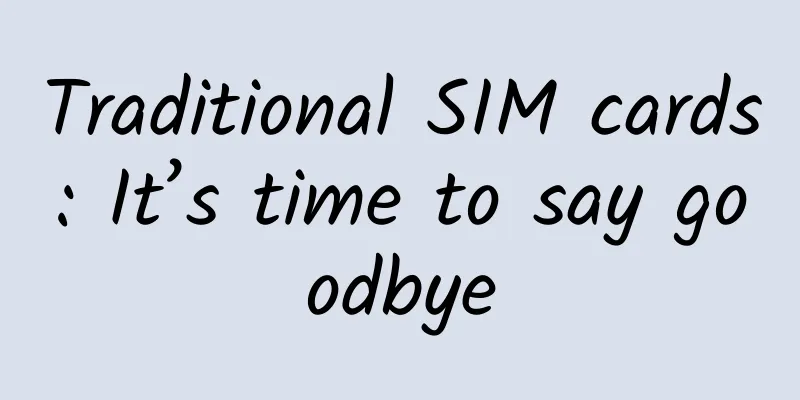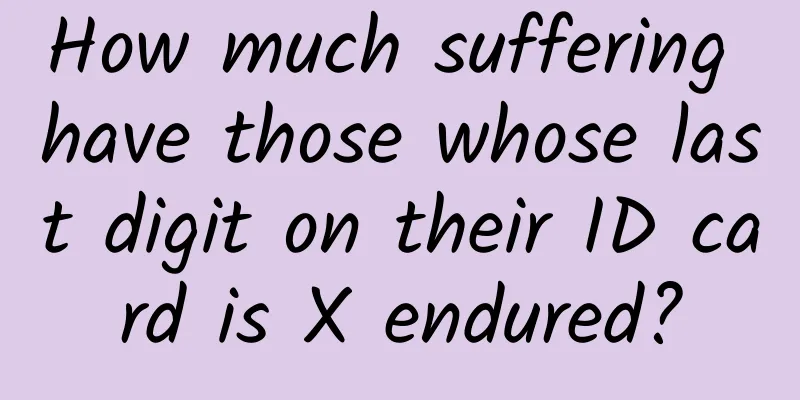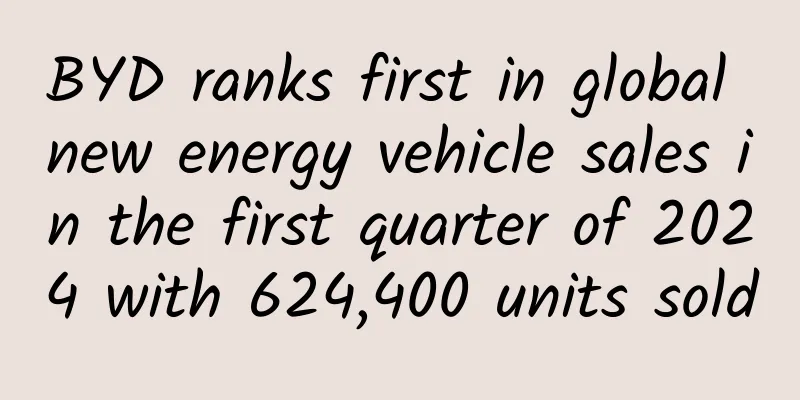Practical Collection | "Luckin Coffee" New Retail Hot-selling Growth Methodology

|
Like the spring thunder that scares away hundreds of insects, a new coffee brand with a blue hue has recently captured the vision of white-collar workers in first- and second-tier cities with a lightning-fast raid. Whether in the office building elevator or on WeChat Moments, you can see its spokespersons - national goddess Tang Wei and national male god Zhang Zhen, smiling and conveying to you the unique attributes of this new retail coffee. That’s right, this is luckin coffee. As a company that was just founded in November last year, Luckin Coffee has quickly opened more than 300 coffee shops in 13 cities in China. This number of stores opened is almost the same as that of COSTA, the second largest coffee chain in China after Starbucks, which entered China in 2006. The store opening plan for May is even more aggressive, setting a target of 500 stores nationwide. I once experienced the service process of luckin coffee in a Wangjing store in Beijing, and was deeply impressed by the strength of capital and the "Buddhist" attitude of the store staff. They didn't even check whether I fulfilled my promise to download the app and register, but they brewed me a cup of strong coffee for free and delivered it to me. This broke my stereotype of physical coffee shops and made me extremely curious about ROI and possible business models. I mobilized the new retail practitioners and observers around me to study the lucky coffee phenomenon and figure out what kind of coffee beans are sold in the coffee pot of this "magical" coffee shop. What kind of digital genes are hidden behind Luckin Coffee’s overwhelming advertising and cashless app ordering? How do the operators behind the scenes think about this combination of punches and measure its effectiveness? Today, we interviewed Mr. Yang Fei, CMO, the chief planner behind a series of marketing activities of luckin coffee. Yang Fei, who was once in charge of marketing at UCAR, poured his extensive experience in this field into luckin coffee's prototype testing, cold start, and online and offline marketing strategies, and achieved phased success. Mr. Yang Fei is also a reader of the book "Growth Hacker", and we highly agree that Marketing should combine technology and data. Behind the seemingly huge marketing costs of hiring endorsements, expanding stores, and playing with fission is the deduction and iteration based on mature methodology (which he summarized as "traffic pool thinking"). It is also for this reason that I have been able to raise some sensitive questions and receive patient answers (some of the questions were provided by the Growth Officer Research Institute reader community). The following Q&A transcript may reveal the in-depth thinking behind the marketing methodology of the "Little Blue Cup" that everyone loves. Fan: Let’s get straight to the point. I’m curious about how you did a cold start in the beginning? Yang: We initially opened three stores for preliminary testing in the lobby of the company headquarters (Lenovo Bridge store, open to internal employees), Galaxy SOHO Building C (extremely remote location), and Wangjing SOHO (good location), which can be regarded as MVT. In these places, we tested 3 play styles: Headquarters lobby: Observe employees’ consumption frequency, repurchase rate, price sensitivity, etc. We mainly use internal purchase links and WeChat to place orders, and on this basis we continue to test the impact of various price combinations and promotional policies. Wangjing SOHO: Good location, high traffic, no shortage of new customers, so not many advertisements are placed. The main test is App-based fission marketing, focusing on the number of fissions and the speed of attracting new customers. Wangjing SOHO covers 30,000 people to see how long it will take to reach the maximum production capacity of a single store. Galaxy SOHO: The location is remote and there is no traffic. It is mainly used to test the effect of WeChat LBS store fixed-investment advertising, as well as the speed of attracting new customers after acquiring customers through this advertising. The final conclusion is that by quickly informing the surrounding people through LBS advertising, obtaining the first batch of download users with the first order for free, and using interesting and powerful fission to attract new users (buy one, get one free) to attract existing customers and find incremental customers to achieve viral growth, it only takes an average of about two months for the store to become the coffee shop with the best business in the surrounding area. Fan: How are online and offline campaigns arranged? (A reader from Growth Officer Research Institute: Our company’s elevator advertisements already have luckin coffee ads, but they are not in the delivery area) Yang: It seems that luckin has a lot of advertisements, covering the entire life circle. But in fact, the placement is not blind, and there are not many forms:
Therefore, there are only 3-4 media forms online and offline. Brand owners go offline, and online focuses on results. Fan: How much money did you spend on media and celebrity endorsements? How are celebrities chosen? What is the purpose? What is the growth effect? What is the ROI? Yang: Keep it confidential, the effect is very good. The choice of quality stars, not traffic stars. Mainly because it fits the tone of workplace coffee. Fan: I am more concerned about the user repurchase rate and expected profit time after subsidies. Yang: The subsidies have not ended yet, but the current user repurchase rate in stores that have been open for more than 3 months has reached over 80%. The first reason is the good quality, the second is the good reputation around us, and the third is the high cost-effectiveness. Coffee is a high-frequency, heavy-drinking beverage. If you do a good job of user profiling and CRM, you don’t have to worry about repeat purchases. Fan: Friends around you buy luckin coffee because of the discount or because they want to try it for the first time, but after the subsidies are stopped or the craze has passed, what is luckin's main core advantage in the coffee industry? Yang: The core advantage is definitely the product’s cost-effectiveness. This comes from:
In short, the core advantage is the high cost-effectiveness barrier brought about by the fundamentally different business model. Compared with traditional store coffee (relying on physical space and high prices) and supermarket coffee (low prices but few choices, poor brand and quality), establish your own advantages. Fan: Who took the lead in planning and promoting Luckin Coffee’s brand packaging? What cases have there been in the past? It is really beautiful, and I want to scan the code after seeing it. I take the lead. In the past, there was the operation case of Shenzhou Private Car. We differentiated ourselves through safe travel. As a latecomer, we broke through the siege of the travel industry, obtained high-quality customers and stable orders, and were the first to go public globally. There are also some marketing cases and some honors that have been won, which can be searched. The design itself is a combination of internal team + external consulting + advertising company. It adopts the popular flat (blue) style of UI design and sans serif font. Fan: Your publicity is very extensive. There are elevators and buildings everywhere online and offline, and the quality is very high. It seems unrealistic to make a profit just by selling coffee. What are your future plans? Yang: Think about this question in an open-ended way. First, coffee itself is a high-profit product. Commercial coffee basically makes money, but it is hard to say about boutique coffee shops. Second, you have enough online traffic (App) and offline terminals (thousands of stores), and have mastered a large amount of scenario demands and user data. You can sell users more necessary and valuable products. Fan: I see that your marketing traffic entrance always emphasizes App, rather than WeChat service account or mini program. How do we make a deep-seated judgment on the trade-offs behind this? Yang: I think apps can provide the following advantages:
Fan: What do you think is the most important thing for App growth? flow? Yang: Most people would say it’s traffic. Is this really the answer? Yes and no. Traffic is just a result. In the era of mobile Internet, the most expensive things are user relationships and relationship chains. Relationship chain cost is an indicator for locking in user behavior and loyalty. Without the binding of social relationships, many powerful products will be easily abandoned by users. However, products that are injected with social factors will be used more frequently, word-of-mouth recommendations will increase user trust, and friends can also compare with each other after consumption and purchase. And when users want to abandon a product, they should also carefully consider the impact of leaving the circle. You can easily leave a bookstore or a shopping mall, but it is difficult to leave a friend and a circle of friends easily. The social relationship chain is the most powerful moat for any enterprise or any product on the mobile Internet. The key to obtaining low-cost social traffic lies in opening up the social relationship chain. Today's companies must be good at leveraging the power of social platforms (WeChat official accounts, WeChat groups, and Moments) to trigger connection points around users driven by content and benefits, and then open up the user's entire relationship network. When the enterprise's own user traffic reaches a certain level, the fission effect will emerge. Fan: Now that the traffic dividend has been exhausted, what do you think is the most important way for apps to acquire customers? Yang: Take luckin coffee as an example. This is a typical cup of new online retail coffee (ordered through the App, can be picked up or delivered, high-quality coffee). However, since the first step in acquiring customers is to download the App, it is still quite difficult to promote it. Think about it: Who would be willing to download an app of more than 10 megabytes just to have a cup of coffee? During an internal discussion, the CEO of luckin coffee asked me, "What do you think is the most important way to acquire customers through the app?" I answered without hesitation, "Fission and new customers." Compared with traditional advertising methods such as brand exposure, saturation delivery, content marketing, and public relations events, I know that as a typical social drink, coffee will use most of the advertising costs as user subsidies to encourage old users to share with friends and attract new users, which will be the most core means of acquiring customers. The facts prove this to be the case. On January 5, 2018, we officially launched the "Give Away Cups for New Customers" campaign. On that day, the number of new user registrations doubled month-on-month, and orders increased by 40% month-on-month. In addition, compared with the previous precise WeChat LBS business circle investment, this form of customer acquisition cost was greatly reduced. It is no exaggeration to say that today if a company does not have much budget for advertising and media placement, I will not care too much, but if there is no fission marketing in its App or WeChat, it is unacceptable. Fan: What do you think of the concept of growth hacking? Do you think the Chief Growth Officer (CGO) will replace the Chief Marketing Officer (CMO)? Yang: In March 2017, Coca-Cola announced the cancellation of the CMO position, which had been established for 24 years, and replaced it with a new role - Chief Growth Officer. Coca-Cola's overall strategy is also continuously transforming towards "growth-oriented and consumer-centric". Coca-Cola isn't the only company that has added a chief growth officer. Fast-moving consumer goods giants such as Colgate and Mondelez have hired chief growth officers to achieve rapid brand growth and enhance the status of growth in brand strategy. Behind this phenomenon, an obvious trend is the confrontation between AdTech and MarTech. AdTech literally means the technology and means of delivering advertisements and brand content to consumers. In AdTech, paid media, web advertising, SEM paid search, native advertising, programmatic buying, DSP, etc. are all frequently used methods. MarTech mainly refers to technological marketing achieved through the use of technical means such as instant service, optimization of consumer experience processes, optimization of customer conversion technology, and the use of management systems such as big data tags, customer relationship management, and marketing automation. AdTech is more like the "external skills" of marketers, which can be achieved with a budget and creative ideas; while MarTech is more like "internal skills" and can provide overall solutions for corporate digital transformation and business transformation. The reality is that MarTech is clearly superior to AdTech in terms of growth drive and customer acquisition costs, and is increasingly becoming a core growth tool for companies. I once attended the growth conference of GrowingIO (a data analysis company) in China. As a marketer, I was deeply moved when I heard a group of programmers using words such as "creativity", "hot spots", "event marketing" and "self-media" on the stage. The boundary between growth hacking and marketing is blurring, and is even having a huge impact on traditional marketing concepts. But with this trend, let’s go back to our original question: Will growth hackers really replace marketing directors? My answer is that they will not be replaced, but integrated. The new generation of marketing directors must overcome the original shortcomings in marketing knowledge and master more products, technologies, data and other means to drive growth. Growth hackers will also become the core organization of the enterprise market and become one of the "three poles" coexisting with traditional brands, external advertising, etc. Startups do not have huge funds to choose high-quality promotion channels and top content cooperation. In this case, they can rely on big data drive and growth hacking to make it a growth-boosting mechanism. Although mature brands have market share and a large number of loyal users, they will still face the challenge of sustained growth. It is also necessary to supplement the growth hacking team with a marketing team to guide marketing advertising, creativity, and delivery through technology and data. We see that whether it is the traditional marketing department or the growth hacking technology department, the inevitable trend is: if an enterprise wants to achieve traffic acquisition and monetization, it must find ways to control variables based on its own traffic, find incremental growth from existing traffic, and obtain more growth results through refined operations. Fan: Can you tell us about your understanding of AARRR, the most classic model in Growth Hacking? Yang: I think three points of AARRR are particularly important: First, obtain the first batch of seed users. Only with the first batch of users can other subsequent actions be completed. Especially fission marketing, its essence is to use old users to bring new users, so the first batch of users are very critical and are the foundation of marketing. Second, improve retention rate. If you want to improve retention rate, you can continue to experiment in online marketing. This is the essential difference between growth hacking and traditional marketing. The A/B testing and MVT (minimization testing) proposed by growth hackers are both aimed at improving retention and conversion rates. Of course, social relationship chains are also one of the important means to improve retention rates. For example, Facebook discovered in its early days that user churn was very serious. In order to prevent further churn, Facebook added a new page after the logout process. When a user is about to leave, the system will read out the five people with whom they interact most closely in the friend list and ask, "Are you sure you want to leave?" Many users who originally wanted to log out were worried that they would never see these friends again or see their status, so they softened their hearts and stayed. After this page went online, it reduced Facebook's losses by 2% within a year without spending a penny and retained 3 million users. (Fan Bing’s note: See Growth Hacker) Third, fission. That is, how old users can use technical means to virally recommend application products to new users. This is the focus of this chapter. Fan: Why do you advocate fission marketing so much? Tell me about your understanding of fission. Yang: What is fission? The Tao Te Ching says "Tao begets one, one begets two, two begets three, and three begets all things", which refers to the fission process of the growth of all things. This is also the meaning of fission marketing. From an operational perspective, fission marketing also conforms to the AARRR model and is the last link in it - self-propagation. Through social sharing (rewards, benefits, interesting content, etc.), communication individuals help companies to attract new users so as to achieve the growth goal of bringing in multiple new users from one old user. In fission marketing, there is only one desired result - the lowest cost and maximum customer growth. Although traditional marketers also focus on growth, there is a fundamental difference between this and our emphasis on growth achieved through the use of growth hacking techniques, namely, whether customer acquisition can be achieved without advertising. As we all know, in an era when social media is not fully developed, the most important way for companies to gain market share is to advertise. The cost of advertising consists of two parts: first, the creative production cost; second, the media placement cost. In most cases, companies still rely on the experience of the marketing team when formulating creative and delivery strategies. This reliance on team experience means that creativity and delivery may be one-off deals, with poor trial and error capabilities and high costs of failure, which creates huge uncertainty in the company's customer acquisition growth. What is different is that we emphasize fission marketing achieved through growth hacking techniques, which will greatly reduce the uncertainty of advertising. Compared with traditional marketing, fission marketing is different in two ways. First, emphasize sharing. That is, new users must be brought in through the sharing behavior of old users. This way, the cost is the lowest and the customer base is the widest. After the birth of social apps such as WeChat and Weibo and their becoming mainstream applications, sharing platforms and technical means are no longer obstacles. The key is how to get users to share, and welfare design and fission creativity are the main solutions. Second, post-payment rewards. The original advertising costs for attracting new customers in advance are decomposed into the reward fees for old users' recommendations and the reward fees for new users' registrations, that is: Advertising cost = Rewards for attracting new users + Rewards for registering new users These rewards are basically paid in a post-payment model, and users can only receive rewards after registering or completing actions, thereby reducing the advertising risks of enterprises. Based on the above two points, the main task of a growth hacker is to drive marketing decisions with data. While maintaining the usage habits and activity of the company's original users, they use technical means to repeatedly test to increase the sharing rate, continuously stimulate new users, reward users with advertising fees, implement growth goals, and bring profits to the company. This revolutionary marketing thinking has many advantages:
In short, fission growth achieved through technology is a very cost-effective means of attracting new customers for many high-frequency, low-unit-price industries. If combined with precise fission channels, the cost of attracting new customers will be much lower than the traditional cost. One more thing to add is that this type of new customer traffic is based on social trust relationships, and its conversion rate and retention rate are much higher than traditional new customer channels. 2017 marks the 30th anniversary of KFC’s entry into China. They launched an event called “Classic Delicacies Return to 1987 Prices”, which means adjusting the prices of two classic products back to the prices of 30 years ago to give back to users. Participants only need to become KFC members through WeChat or the official App, and use the coupons to purchase a portion of finger-licking original chicken for 2.5 yuan and a portion of mashed potatoes for 0.8 yuan in the restaurant. This activity itself does not have much novelty, but what is innovative is the advertising promotion method: it uses fission means to distribute coupons through the brand’s own media (WeChat public account, official app, Alipay platform), which are only available to members for a limited time. Due to the huge number of members and sharing through social platforms, the WeChat index exceeded 10 million 36 hours after the launch of the event. During the entire event, the total social media volume exceeded 91 million. Of course, this is just a primary fission case, and the genes that actively induce sharing are not strong enough. Below we will use a large number of detailed cases to analyze various fission techniques. Fan: Can you tell me about some of the in-app fission methods that you think are valuable/impressive? Yang: The ways to play App fission mainly include six forms: new user rewards, fission red envelopes, IP fission, stored value fission, individual welfare fission, and group purchase fission. Method 1: New customer rewards Using old customers to bring new customers is the essence of traffic fission. Welfare stimulation, fun attraction, and value resonance are all commonly used means, but the fastest-acting method is still the reward for attracting new customers. Rewards for attracting new users refer to a reward policy that companies give to both parties when old users bring in new users. This is generally a standard fission method for apps. Among the new users of Shenzhou Special Car, at least 70% are brought in this way. Shenzhou Special Car has a long-term "Invite and Get Gifts" activity on its App page. The activity mechanism is very simple: invite a friend, and after the friend registers and takes the first ride, Shenzhou will give the old user three 20-yuan special car coupons as a reward. The more you invite, the more you get. This will stimulate the participation of old users, encourage them to spontaneously find new users for the brand, accelerate the overall growth of the number of users, and also enable the corporate brand to gain long-term exposure in the circle of friends. Although this profit-driven approach is not very creative and is purely a means of attracting new customers based on technological fission, it can bring lasting and effective conversion effects to the company. Method 2: Fission Red Packet Fission red envelopes are a form of group fission, which is very common and easy to operate. After a user completes a consumption behavior, the received red envelope can be shared with friends. This red envelope can be shared multiple times or you can collect it yourself. Whether from the perspective of benefits or the level of content showing off, this kind of fission red envelope is something that users are willing to share, allowing more people to spontaneously promote products and brands while getting discounts. Many apps such as Meituan and Ele.me use this type of fission red envelope. The fission rules of the fission red envelope are the key to the fission system and the key to the actual occurrence of fission. Only by formulating the most reasonable rules based on users’ interests, habits and the enterprise’s input-output ratio can fission be played effectively. The main ways to play include: sharing to get rules, secondary compound interest rules (to be discussed below), collecting cards to get rules (such as Alipay’s Spring Festival Five Blessings), and registering, downloading, and purchasing to get lucky bags. Fission red envelopes are basically a standard way of playing for apps, but as all merchants are highly homogenized, creativity lacks sophistication, and benefits are getting fewer and fewer (for example, coupons for group buying apps have dropped from a few yuan to a few cents), more and more users are beginning to feel aesthetic fatigue and are less willing to share fission red envelopes. Therefore, companies need to make some improvements to make red envelopes interesting and fun. The "fancy coupon issuance" of UCAR combines the fission red envelopes with the IP resources of the BD department, improving the ordinary fission red envelopes into the "fission + IP" gameplay. Method 3: IP fission IP fission is an upgraded way of playing fission red envelopes. Take Shenzhou as an example. Through traffic cooperation, it has obtained a large number of free film and television IP resources , such as IMAX (giant screen movies) free promotion and broadcasting resources for the world's top movies, iQiyi's popular film and television drama new film resources, etc. Then use film and television posters, celebrity images, etc. to design the sharing page of the fission red envelope, so that when users share the red envelope, it will feel like sharing a recent and interesting film and television content, reducing the purpose of receiving subsidies. Shenzhou combines the IP fission pages of various popular film and television dramas. As far as I remember, in the long-term IP fission of Shenzhou Private Car, the fission effect of the movie "Ghost Blows Out the Light: Mojin" was the best. The red envelope used the image fission of Shu Qi - the tomb-raiding lieutenant "Shu Qi gives you a private car ticket." With this fission alone, Shenzhou Special Car gained nearly 400,000 new users. In fact, there were not too many complicated ideas in the entire promotion process. Many people liked the movie "Ghost Blows Out the Light: Mojin: The Lost Tomb" and saw the red envelope page of "Shu Qi Gives You a Special Car Coupon". They thought it was beautifully designed and creative, and they could also receive subsidies, so they shared it on their Moments. If people in the circle of friends have seen this movie or are interested in it, they will spontaneously share the coupons and then download the special car app to use it. During the entire fission process, the effects of sharing, downloading, and conversion are far higher than purely creative content dissemination. This is the fission form of "technology + creativity". When the TV series "Descendants of the Sun" was popular, Shenzhou also obtained the copyright poster authorization and quickly launched the IP fission of Song Zhongji and Song Hye Kyo. The effect was also very good, and the number of shares increased by more than 40% compared to normal times. Through IP fission red envelopes, Shenzhou Special Car had more than 70,000 shares per day during peak periods, bringing in 20,000 to 30,000 new registered users. After a new user registers, Shenzhou will send invitation reminders by triggering SMS to accelerate the final marketing conversion. Method 4: Stored value fission Stored value fission is actually a mobile version of the concept of primary and secondary credit cards. Its purpose is not only to attract new users from old ones, but also to increase the frequency of user consumption. The family account of UCAR is a good example. In 2016, Shenzhou Private Car launched several large-scale recharge and rebate activities, which stimulated users to recharge their private car accounts. However, the number of rides a user can take is limited after all, and the account balance is very high. In order to encourage users to take more rides and speed up the consumption of stored value, Shenzhou has created a new type of fission - the family account. This is a program similar to the primary and secondary credit cards and Taobao intimate payment. As long as the primary user binds the mobile phone numbers of family members and friends, the other party can use the primary user's account to call a taxi and make payments. At the same time, with personal permission, the primary user can monitor the travel safety of family members and friends. Of course, family members and friends whose mobile phone numbers are bound need to download the special car app before they can use the family account, which can also increase the number of app downloads. As soon as this product was launched, it received explosive results. Shenzhou only used two communication channels: WeChat official account and internal notification of the App, and gained 1.18 million new users in 10 days. If we calculate based on the cost of one order being 80 yuan, this marketing campaign saved the company at least 10 million yuan in communication costs. In addition to driving the growth of new users, the cumulative safe mileage in the first month after the product was launched reached 11.2 million kilometers, and the overall account consumption exceeded 20 million yuan, far exceeding the previous planning goals. What’s more interesting is that since the travel information of family and friends can be sent to the main account, this product allows the user’s entire family to agree with Shenzhou’s safety positioning. For example, a user once posted a screenshot on Sina Weibo, saying that his father kept urging him to recharge Shenzhou because the insufficient balance in the family account made his father feel "very unhappy" about his trip. Method 5: Individual Welfare Fission In addition to one-to-many fission red envelopes, individual welfare fission will also be used, which is suitable for products with higher single experience costs, especially virtual products (such as online courses, educational products, games, etc.). There are many paid courses in "Himalaya FM". In order to attract more users, many paid courses have the "Share and Listen for Free" feature. That is, programs that were originally paid-for can now be listened to for free as long as they are shared to Moments, and are valid for a long time. The setting of this function, on the one hand, brings real benefits to direct users, and on the other hand, reaches more potential users through fission sharing. All of the above belong to content fission. Companies do not need to spend too much money. By giving users some small benefits and discounts and providing them with a chance to try their products, they can attract new customers. Method 6: Group buying fission The group buying fission of Pinduoduo App has also created miracles in traffic and sales, which is worth studying. Pinduoduo is a third-party social e-commerce platform founded in 2015 that focuses on C2B (a transaction method between consumers and merchants) group buying. By initiating group purchases, users can use social networking platforms to purchase high-quality goods at lower prices with people around them. Although the group-buying model is not new in e-commerce, Pinduoduo has dug deep into the "social + e-commerce" model, organically integrating the two and achieving outstanding results with a daily transaction volume exceeding 10 million yuan and more than 20 million paying users in less than a year since its launch. Allowing users to "gain benefits through sharing" is the basic principle of Pinduoduo's operation. The advantage is that every user is a traffic center (users need to voluntarily bring their relatives and friends to join the group), and for the platform and merchants, each traffic distribution can also bring a more accurate target group (users who join the group are all users with self-service purchasing intentions and strong purchasing needs). This can stimulate user activity, increase stickiness, and also lead to higher repurchase rates, conversion rates, and retention rates. It can be seen that after seeing the low prices and welfare incentives of the platform, active users pay to start a group and share it on social platforms (WeChat is the primary platform); after seeing the sharing link, passive users are stimulated by the two major appeals of "cheap" and "useful" and then complete the purchase and share it again. As a result, it continues to split based on secondary users until the group purchase is successful. Compared with the traditional group buying model where participants do not know each other, mobile-based social networking among acquaintances has become the core of Pinduoduo's model. In the process of group buying, users will consciously help promote for their own interests (only when a certain number of people are grouped together can a group be successfully formed) and use WeChat to achieve viral spread. This "customer bullying the store" effect allows both buyers and sellers to profit, and is another innovation in fission marketing. |
<<: Starting from 4 dimensions, let information flow ads accurately reach users
>>: Tips group can provide a stable monthly income of 10,000+ sideline projects
Recommend
3 operational thinking methods to beat e-commerce promotion campaigns (Part 1)
This article mainly summarizes the author's o...
Why is Huawei HiSilicon's octa-core processor so awesome?
The day before yesterday, Samsung released the hig...
A must-read for marketers: 5 senses and abilities you must master!
I have read many marketing books and found that t...
Douyin short video monetization course: teach you how to make products and build IP
Douyin short video monetization course: teach you...
11 Essential HTML5 Animation Tools
[[155716]] Nowadays, the most popular language in...
When will 5g become popular: What are the things that novices should pay attention to when building a website for SEO?
What should beginners pay attention to when build...
How to promote and attract traffic at Station B!
Bilibili (www.bilibili.com), referred to as B sta...
I didn't expect you to be such a tiger!
Today (January 26) is the 24th day of the twelfth...
Can the ketogenic diet "starve" cancer cells? The list of scientific rumors in October 2024
1. As long as you don’t have a headache or feel d...
How to build a corporate mobile website? Which companies are good at mobile website construction?
How much does it cost to build a mobile website n...
The power of fermentation: the contribution of production technology to the nutritional value of cheese
Cheese is one of people's favorite dairy prod...
Xiaomi's 46 high-definition posters tell you how to do fan marketing
How did Xiaomi achieve rapid development in just ...
It came too fast: Hyundai's US CEO was fired
According to a recent report by Automotive News, ...
The three guarantees service is in name only. Who is responsible for the chaos in mobile phone after-sales service?
While mobile phone manufacturers are constantly u...
The world's most spectacular migration: Why do Tibetan antelopes travel thousands of miles to give birth every year?
Science Times reporter Zhang Yun The famous annua...









